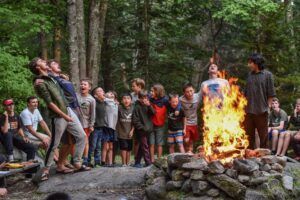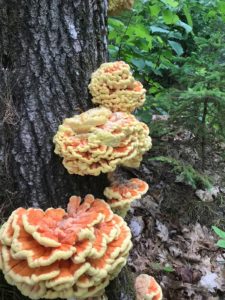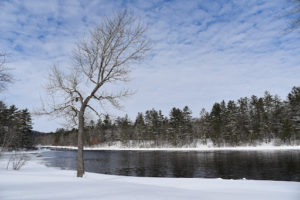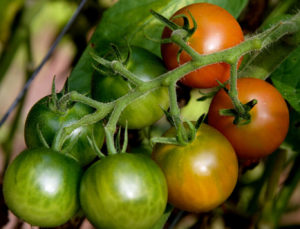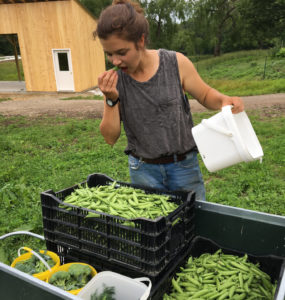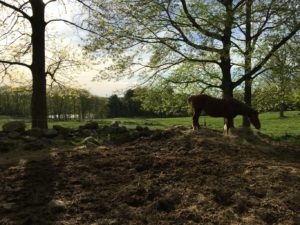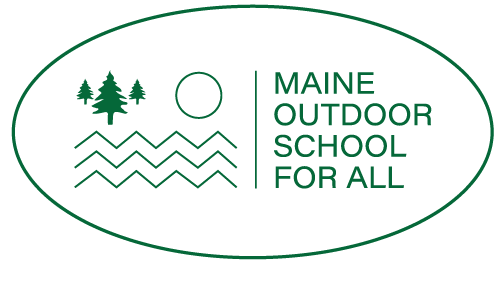Mainers who love maple syrup look forward to March all year long. It’s an end-of-winter celebration infused with the smell of sap boiling in the open air. March + Maine = Maple Madness
Every March, Chewonki students and teachers tap maple trees on the Neck to gather the sap that cold nights and warm days cause to course through awakening trees. They boil it down outdoors over many days in an evaporator, a flat metal tray set on a woodstove in our sugar shack (okay, it’s a bike shack in the warmer months). As moisture evaporates from the sap, it thickens and darkens into golden-brown syrup.
About 40 gallons of sap yields a gallon of syrup, so every drop of sap and syrup is precious. If we’re lucky, we’ll get about six gallons of syrup this year.
Students from both Maine Coast Semester and the Elementary School at Chewonki help with sugaring. Twenty-six red maple and sugar maple trees have been fitted with a spout, or spile, to which a tube leading to a collection bucket is attached. For semester students, “It’s part of our weekly Work Program,” says history teacher Phill Kratzman, one of Chewonki’s sugaring bigwigs. “Students collect the sap and record how much we get from each tree, store it in 40-gallon barrels, and help with the daily boils. They have been very excited about it.”
With semester students now on vacation, the Elementary School students have taken charge of collecting sap and keeping the boil bubbling. “The kids love it,” says Emily Bell-Hoerth, teacher of grades three and four. “They all love maple syrup and it’s fun to be working so hands-on and feeling like we’re supporting the community.”
Most students have never been part of maple syrup production, and it’s a first for Kraztman as well. “Having grown up in New England, I’ve visited maple syrup tree farms but have never had the opportunity to make it before,” he says. “Sugaring has given me a new appreciation for the time and hard work it takes. It’s a very rewarding process. I like knowing that the syrup comes from trees on Chewonki Neck and that I can share this experience with the students.” (He’s dreaming of his favorite way to enjoy maple syrup: a stack of blueberry pancakes dripping with sticky deliciousness.)
Sugaring means science as well as sweetness, points out James Kary, who teaches science at Maine Coast Semester. “This project allows us to make good connections to the curriculum,” says Kary. “For example, last week in science, we studied tree physiology. We started the week by studying photosynthesis, and on Friday, we reaped the rewards of understanding trees by wounding them so we can make food. [The spile holes do heal.]” Kary’s reverence for trees is clear as he describes how below-freezing nights cause the gases in maple sap to contract, creating a vacuum that sucks water up from the roots to “recharge” the tree’s sap supply; while daytime temperatures above freezing cause those gases to expand, providing the positive pressure that pushes sap out of the spile. “As long as internal pressure is there, the tree’s xylem will ‘bleed’ sap when you cut into it,” Kary notes. Maples trees have an especially high concentration of sucrose, making them top choice for syrup.
Maine Coast Semester 52 student Lindsay Finn got the whole thing going when she tapped birch trees to make syrup back in 2013 for her Human Ecology Capstone project. She reintroduced sugaring, a spring celebration as old as the Native American presence in New England, to Chewonki Neck. When we drizzle maple syrup on our French toast, we’ll thank Lindsay along with the students and teachers at Chewonki now who have have engaged in this celebration of the coming spring.





